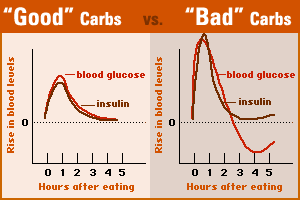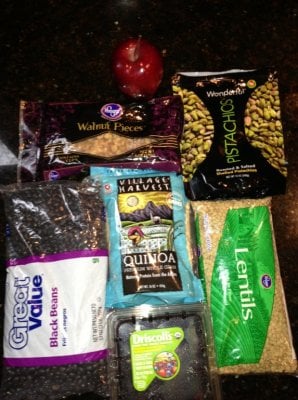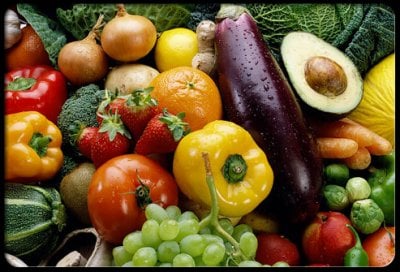Nelson Vergel
Founder, ExcelMale.com
 By Michael Mooney
By Michael MooneyFrom Built to Survive
Carbohydrates
I would also suggest altering your diet so that it is balanced somewhat like what might be called an “evolutionary-type hunter-gatherer diet.” This means getting more protein and a moderate amount of the healthy types of fats, while eating fewer high-calorie, starchy, complex carbohydrates or high-glycemic, sugary, simple carbohydrates.
Currently, many progressive nutritionists are recommending that people with insulin resistance consider reducing their total calorie intake and intake of high-calorie complex carbohydrates that can release into the blood stream quickly,http://www.excelmale.com/#_edn1 including wheat breads and most processed wheat products. These kinds of carbohydrates actually are quite calorie dense and can upset insulin metabolism as much as sweets.[ii] [iii] They are even more problematic when included in high fat foods. (Think pizza and ice cream.) Also on the list of carbohydrates to avoid is the sugar called fructose, which is known to promote insulin resistance, and raise cholesterol.[iv] Look for it on ingredient panels as fructose or high-fructose corn syrup. I also underline that some people will experience a reduction in insulin resistance just by reducing the total calories in their diet, as many people simply eat too many calories. However, if you are having a hard time maintaining weight because of wasting or infection, getting plenty of healthy calories is essential for keeping and building lean body mass, so be careful about reducing your intake of food.

At the same time, I recommend an increase in the intake of complex carbohydrates sources that contain less total calories but lots of fluid and nutrients, like vegetables. Compared to grains, vegetables are more nutrient dense, and less calorie dense. While some glycemic indexes vegetables like potatoes and carrots have high, they supply good amounts of nutrients per calorie, and they do not contain a great amount of calories for their volume like grains or sweets do, so their effect on insulin production, insulin resistance and body fat accumulation is not as great. (Carrots contain only 195 calories per pound, boiled potatoes contain 450 calories per pound, while breads contain about 1200 to 1500 calories per pound, and sugar and sweets contain about 1700 calories per pound.)
Other good carbohydrate sources are beans, yams and green peas, and whole fruits like oranges, grapes, apples, pears, and cherries. In other words try to eat natural food carbohydrate sources that are one step away from nature.
If you do want to include grains in your diet, barley, cream of rye, oatmeal and brown rice have relatively lower glycemic indexes than most wheat products, but be careful to moderate the total amount of these high calorie starch sources. If you include them in your diet, I suggest eating servings that are about one third as much you'd really like to eat. (Again, try to moderate your total carbohydrate calories if your goal is to reduce insulin resistance.)

While a high-carbohydrate diet has been recommended by some nutritionists for conditions of insulin resistance (diabetes), a study by Chen of Stanford University, showed that a lower-fat, higher-carbohydrate diet led to higher day-long blood glucose, insulin, and triglycerides, as well as post-prandial (after a meal) accumulation of triglycerides, and increased VLDLs (very low density lipoproteins),[v] which can increase the risk of cardiovascular disease. The idea that lower carbohydrates diets are superior is supported in an article in Nutrition Reviews by dietitian Nancy Sheard, who said, “Recent studies indicate that a diet high in monounsaturated fat and low in carbohydrate can produce a more desirable plasma glucose, lipid, and insulin profile.”[vi] A study published in the Journal of the American Medical Association further supported this approach when it showed significantly elevated triglycerides and LDL cholesterol levels with a high carbohydrate diet, while a high-monounsaturated fat diet let to a lower-risk lipid profile.[vii]
http://www.excelmale.com/#_ednref1 McCarty, MF, et al. Reduction of free fatty acids may ameliorate risk factors associated with abdominal obesity. Med Hypotheses (1995) 44(4):278-286.
[ii] Truswell, AS. Food carbohydrates and plasma lipids — an update. Am J Clin Nutr (1994) 59(suppl)(3):S710S-S718.
[iii] Miller, JC, et al. Replacing starch with sucrose in a high glycaemic index breakfast cereal lowers glycaemic and insulin responses. Eur J Clin Nutr (1994) 48(10):749-752.
[iv] Pamies-Andreu, E, et al. High-fructose feeding elicits insulin resistance without hypertension in normal mongrel dogs. Am J Hypertens (1995) 8(7):732-738.
[v] Chen, YD, et al. Why do low-fat high-carbohydrate diets accentuate postprandial lipemia in patients with NIDDM? Diabetes Care (1995) 18(1):10-16.
[vi] Sheard, NF. The diabetic diet: evidence for a new approach. Nutr Rev (1995) 53(1):16-18.
[vii] Garg, A, et al. Effects of varying carbohydrate content of diet in patients with non-insulin-dependent diabetes mellitus [see comments]. JAMA (1994) 271(18):1421-1428.















